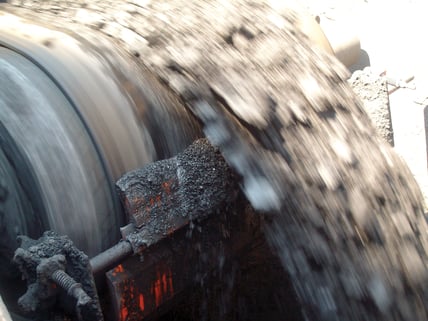How To Effectively Clean A Conveyor Belt
Criteria for Effective Belt-Cleaning Systems Installation
Installing an effective belt-cleaning system involves several key criteria:
Positioning the cleaners far forward along the conveyor’s return run, keeping them out of the material flow, and minimizing any risk to the belt.
Far Forward
To minimize the release of carryback into the plant, belt cleaning should occur as close to the head pulley as possible. Typically, the primary cleaner is installed just below where material leaves the belt, ensuring carryback is promptly reintegrated into the material flow. This setup, with the cleaner tensioned against the belt and mounted securely on the head pulley's face, allows precise control of blade-to-belt pressure. By starting with a primary cleaner in this forward position, there's more room to add secondary and tertiary cleaners further along the belt, reducing the chances of carryback escaping and minimizing the need for additional recovery devices like dribble chutes or scavenger conveyors.
 Out of the Material Flow
Out of the Material Flow
It's critical that cleaners are installed away from the material flow to prevent buildup on the blades or structure. Placing a cleaner in the material trajectory can lead to premature wear on its support frame and blade backs, necessitating blade changes before the edge wears out. Ideally, the primary cleaner should be positioned so that its blade tip is below the horizontal centerline of the pulley, ensuring effective cleaning without unnecessary wear.
Minimizing Risk to the Belt
Selecting a belt-cleaning device involves mitigating any potential damage to the belt or splices it's designed to protect. The cleaner's design should allow the blade to move away from the belt when encountering splices or damaged sections, preventing impact shock. This is particularly crucial for primary cleaners, which often operate at acute angles. Aggressive cleaners with high cleaning pressure can wear out the belt's top cover faster and increase the risk of snagging on protruding splices or belt flaps.
Care should be taken in choosing an appropriate material to put in contact with the belt. Material such as strips of used belting should never be applied as a belt-cleaning or sealing material, because they may include steel cables or abrasive fines. These embedded materials cause excessive wear of the belt’s top cover.
